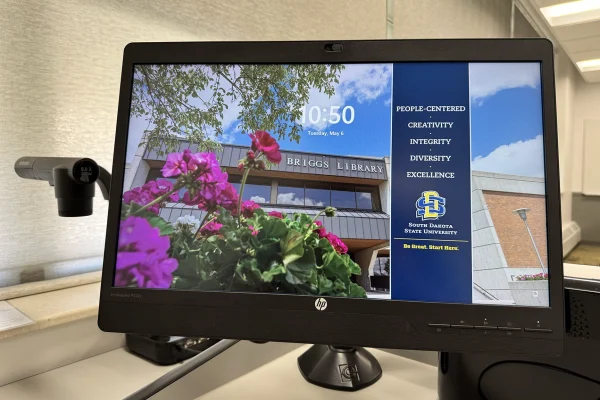Student Health Clinic adjusts to new COVID guidelines
September 23, 2020
Student Health Clinic counseling services temporarily changed due to COVID-19 precautions this year, raising concerns about taking this new approach in order to protect everyone from contracting and spreading the virus.
Zoom, a video communication platform, is the new “normal” source of communication on campus this semester. After students left campus in March, Zoom became the university’s immediate transition to continue classes while in quarantine.
“There’s some Zoom fatigue with doing meetings all day, and I know the students are exhausted,” Polly Davis, a therapist in the Miller Wellness Center on campus, said. “I don’t think it’s the most mentally healthy thing that could happen, but I think it’s the best we can do to keep people safe.”
Finding time for all students interested in counseling has been difficult in the past. The Student Health Clinic counseling is currently at its highest staff count since Davis started working there five and a half years ago. They’ve managed to create a shorter waiting list and increase their availability to students and are also trying to continue group counseling, potentially allowing them to see 10 students in an hour and a half rather than one per hour. Due to the increased staff, the number of students attending counseling since the beginning of the pandemic has remained about the same.
The counseling staff rotates between one week in the office and two weeks at home in groups of three. Urgent care is still available daily to students with certain counselors through Zoom.
“Feeling a little more confined has been difficult,” Davis said. “I personally prefer in person.”
Not every student and staff member is against the use of Zoom. While some students prefer in-person sessions, too, some are also telling their counselors that they would rather be on the cautious side.
Muriel McLaughlin, a senior student at South Dakota State University, noted that there has been an increase in counselor availability.
“It’s different not getting to be in person, but I’m grateful the counseling services found a way to keep in touch with their patients,” she said. “I’ve had my ups and downs since we got sent home in March. My counselor continued our appointments into the summer, which was great for me. I haven’t noticed any new problems arising for me.”
Instead of waiting two or three weeks between sessions, now it’s likely to meet within a two week timespan.
“I don’t want students to give up on trying if they have to wait a couple weeks,” Davis said.
SDSU continues to work on privacy issues. Going home in March created concern for some who needed a safe place to talk and needed to live in a school-structured place. Continuing or beginning treatments through Zoom raises the possibility of inconsistencies, issues of trust and delayed progression. Having a stable and comfortable environment to meet is an essential part of each student’s therapy. The university has designated rooms in residence halls and the library as an option if students need to get out of their environments.
“Each student has different preferences on how they like to go about their session, like which spot they choose, if they like the overhead lights on or a lamp instead, etc,” McLaughlin said. “For me, the transition to Zoom was easy because I had already developed a relationship with my counselor. It was like FaceTiming a friend.”
The Wellness Center wants to make sure that awareness and use of Zoom for students’ mental health is posted around campus. Constant reminders of taking care of oneself can encourage new students to consider counseling offered on campus.
Video communication may not be the preferred method of counseling for everyone, but it’s necessary for SDSU to keep students and faculty safe. Many are content with the methods put in place this semester, but there is hope that it is temporary.
“The faculty and staff really want things to get back to normal,” Davis said.






















